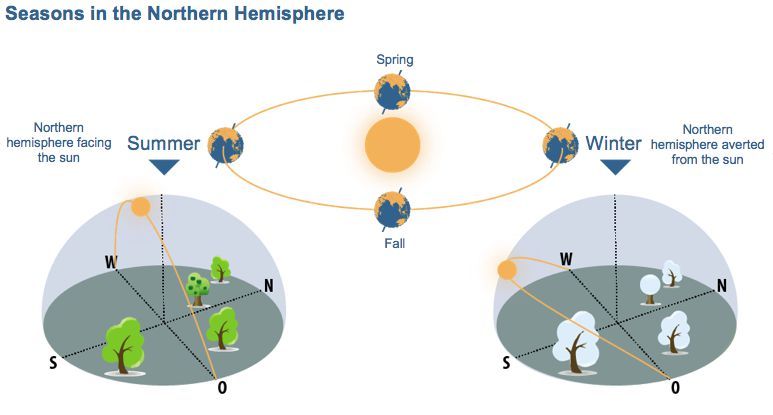How Seasons Form
The earth orbits the sun once in 265 days. During this journey, the solar radiation on the globe and as a consequence the temperature changes. Light and temperature are important factors that influence the vegetation and fauna of the earth.
The earth’s axis is tilted by 23.5° compared to it’s travel route around the sun (the ecliptic). During its orbit around the sun the earth once inclines the southern and once the northern hemisphere more towards the sun.
The sun rays fall steeper on to the side of the earth’s surface which is inclined towards the sun. This makes the floor warm more than on the other side. The sun describes a high arc in the sky and is visible longer.
→ We experience long, warm summer days (illustration, left side).
If the northern hemisphere is not inclined towards the sun, the sun's rays fall very flat on the earth and can warm the surface less. The sun stands low in the sky and the arc it describes is much shorter.
→ It is wintertime (illustration, right side).



